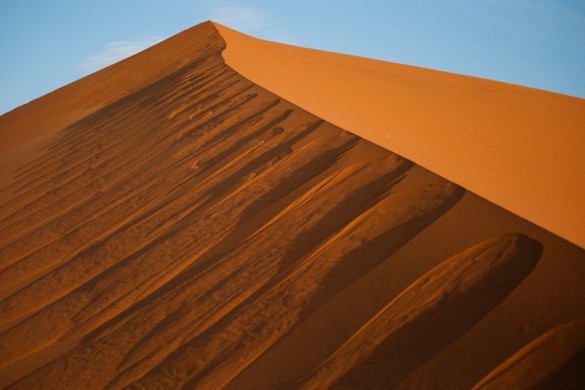Prior to arriving in Namibia, we had read that the road system within the country was phenomenal. Now, having driven from one end to the other, I tend to disagree. That’s not to say the country isn’t well connected, because it most certainly is. If you look at a map, you’ll see an intricate design of squiggly lines — some solid, others spotted, depending on their surface. Most of what we experienced was a mixture of gravel, rock, and sand. The record rain falls caused a handful of road closures and wipe outs, making traveling from A – B, more like A – Z, especially in a 2-wheel drive micro-mini, like ours.
Long days of lonely road and lovely scenery consumed most of our time while traveling throughout the country. I can honestly say that my mind wandered there, more than anywhere, as the world passed by from the passenger side, without a soul in sight. I thought about family, I thought about friends. I went over my life with a magnified glass, leaving no rock unturned. When I wasn’t too busy contemplating my life or the universe, I thought about Avis and the many ways in which they were screwing us. I also thought about getting stuck, as disaster loomed around each and every corner.
Our next stop should have been the seaside town of Luderitz, but some questionable terrain and awful weather caused us to stay in the deserted town of Keetmanshoop. On the way, we encountered a similar vehicle flagging us down. We assumed they were in some kind of trouble, but it turned out they just needed a light. I guess when you need a smoke, there’s just no stopping you. Crazy kids. Once there, shops were closed, streets were empty, and an overwhelming eerie feeling permeated the air. Luckily, our stay was short.
With the sun attempting to shine and Keetmanshoop fading in the rear view mirror, we were alone once more. It’s hard to imagine any life form being able to survive in the harsh environment that stretches from there to the Atlantic, but it happens to be home to some of the world’s only desert-dwelling wild horses. With so much area to roam, catching a glimpse of these fascinating creatures is no easy feat. We kept a lookout and, at one point, thought we might have spotted two, far off in the distance. I suppose we’ll never know, as neither of us had binoculars. Bummer.
When we did arrive in Luderitz, we were a bit taken back. We passed through some of the most desolate terrain to find “Little Germany” resting on the shores. You could watch tumbleweeds blowing in the wind, while standing in front of a colonial building, next to a sand dune, with an apple strudel in one hand and a pilsner in the other. I couldn’t help but think, “why would anyone live here?” Well, it didn’t take long to answer that question. The town is surrounded and supported by diamond mines — you know, those little sparkly pebbles of crystalline carbon, everyone seems to love so much.
Most of the land bordering Luderitz belongs to the Namdeb Diamond Corporation (De Beers – Surprised? Not me), meaning it’s strictly off limits. In fact, they are so concerned with trespassing that they post signs everywhere, letting you know it’s a serious crime. I’m not sure what they do, but we weren’t about to find out, as I’m sure it’s not nice. I like ten fingers and toes.
The windy peninsula known as “Shark Island” was our home away from home. Don’t let the name fool you — it’s not an island and there were no sharks. Once we secured the tent with the help of several rocks, we set off to explore the coastal area west of town. We encountered more of the same barren landscape, only this time it collided with the Atlantic, giving it a dreamlike quality. The rocks glistened, sun set, and once again, I needed a pinch. Am I really in Namibia? Are you really standing next to me? Is that seriously a lone white flamingo on shore?
A trip to the area wouldn’t be complete without a visit to Dias Point. It’s not the view that draws you in, but the wind. Brace yourself. Literally.















